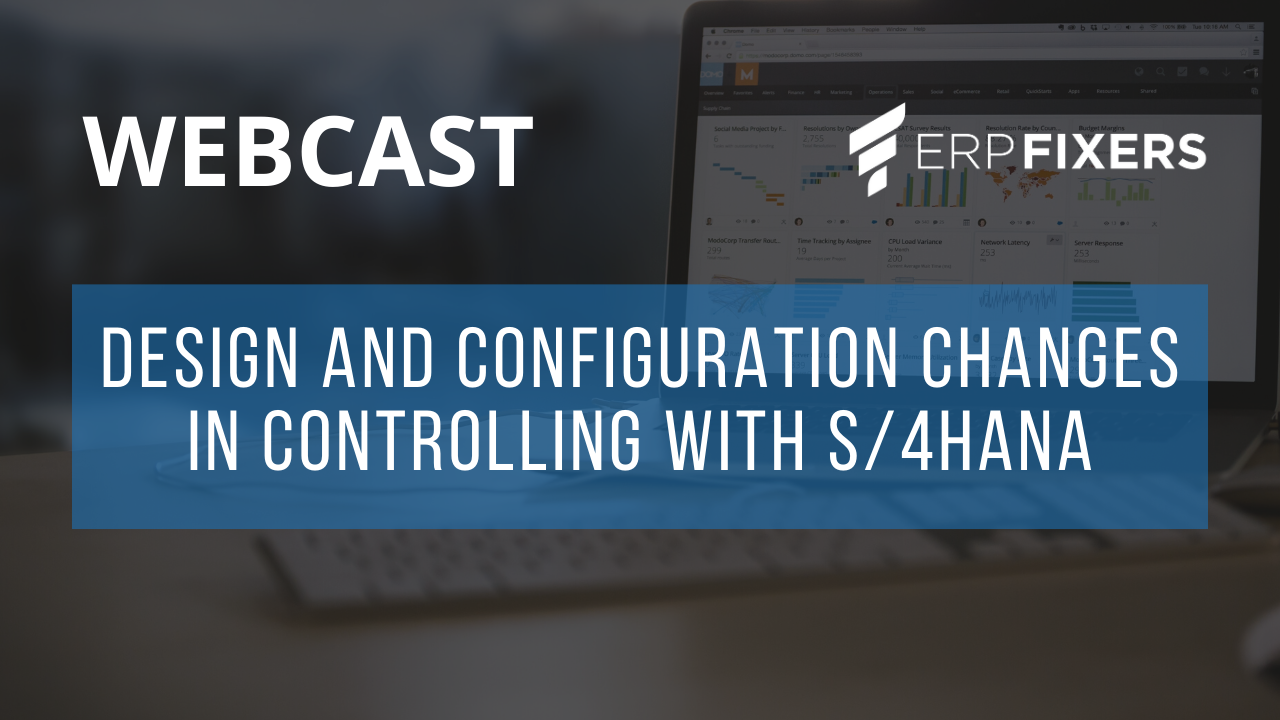WALK AWAY FROM THIS SESSION WITH AN UNDERSTANDING OF DESIGN AND CONFIGURATION CHANGES IN CONTROLLING WITH S/4HANA.
Presenter will share important design and configuration changes in Controlling with S/4HANA, including: Cost Element part of G/L Account; Account Based Profitability Analysis; Material Ledger mandatory; Cost of Goods Sold by cost component; Production variances by category.
• In ECC, Cost Elements are created within Controlling module; with S/4HANA Finance, Cost Elements are now part of G/L Account.
• In ECC, Costing-based CO-PA has several advantages over Account-based CO-PA and had therefore been a preferred choice for majority of the clients; with S/4HANA Finance, most limitations of Account-based CO-PA have been addressed.
• In ECC, Material Ledger is optional, which includes Actual Costing functionality which calculates Actual Cost / Periodic Unit Price; with S/4HANA Material Ledger is mandatory (Price Determination 2 – Transaction-based); but Actual Costing is still optional (Price Determination 3 – Single-/Multilevel).
• In ECC, costing-based CO-PA allows visibility of various cost components in profitability reports, but in FI, only one line item is visible for COGS; with S/4HANA’s account-based CO-PA, different cost components can be mapped to multiple general ledger accounts.
• In ECC, all production variances are bundled and posted to one price difference (PRD-PRF) account; analysis of variances is carried using Controlling reports; with S/4HANA, variances can be posted to different G/L accounts.
Watch the pre-recorded webcast:
Q&A from the Webcast:
Q: We are using costing-based CO-PA on ECC right now. We have not activated account-based CO-PA. When we move to S/4HANA and opt for account-based CO-PA, will we get historical data for account-based CO-PA for prior years?
A: There is no standard way to convert historical data from costing-based CO-PA to account-based CO-PA. Either one needs to activate account-based CO-PA ahead of time or use custom tools to build history for prior periods. Information about one such tool (Winshuttle) can be found in this whitepaper https://www.erpfixers.com/whitepaper-what-to-expect-when-migrating-finance-from-sap-ecc-to-sap-s/4hana and this webcast https://www.erpfixers.com/blog/planning-your-finance-migration-to-sap-s4hana
Q: When we say material ledger is mandatory with S/4HANA, what if I do not want to use actual costing functionality – do I still need to use it? (To give some background, we are not using actual costing functionality in ECC as of now)
A: If you are not using actual costing (price determination 3- single/multi-level) currently, then you do not need to use it in S/4HANA. Transaction-based (price determination 2) is automatically available in S/4HANA
Q: You mentioned that cost elements are now part of GL account in S/4HANA. What happens to cost element groups? Are these also gone made part of GL Accounts?
A: Cost element groups are still available and maintained via the same transactions KAH1, KAH2 and KAH3
Q: Now that cost elements are now part of GL account in S/4HANA, can one post an FB50 journal entry to secondary cost elements?
A: No, one cannot to post a direct journal entry to secondary cost element. One must go through controlling transactions meant for specific business transaction (e.g. KB21N/CORK/COR6N for activity posting, KSU5 for assessment)
Q: What is the purpose of the check box in Parallel Accounting using GL Accunts in FINSC_Ledger?
A: Indicator Parallel Accounting Using Additional G/L Accounts (field FINS_PARALLEL_GLACCT PARGLACCTS) controls whether parallel accounting will use G/L accounts (if activated), or different ledgers (if de-activated). Activating this indicator implies that more than one accounting principle needs to be assigned for this company code and ledger combination.
Q: For those who are not using Material Ledger and migrating to S4, do we need to do any additional configuration and master data changes? And, do they need to be considered other than just activating the Material Ledger?
A: If you are not planning to use actual costing (price determination “3” – single/multi-level), then no additional configuration is necessary. System automatically sets material masters to price determination “2” – transaction-based during the conversion process.

